|
ZUMWALT DESTROYER DDG-1000
USS Zumwalt (DDG-1000)
is a guided missile destroyer of the United States
Navy. She represents a significant leap forward in
naval capabilities, showcasing an array of
advancements in her designation, mission
capabilities, and equipment. Her sheer magnitude
commands awe, boasting an impressive length of 610
feet and a displacement exceeding 15,000 tons. Her
extraordinary appearance immediately catches the eye
with futuristic and sleek design, reminiscent of a
science fiction vessel. Notably, the ship's bow
forms a razor-sharp edge, setting it apart from
traditional destroyers. This striking design is not
just for aesthetics; it plays a crucial role in the
ship's capabilities.
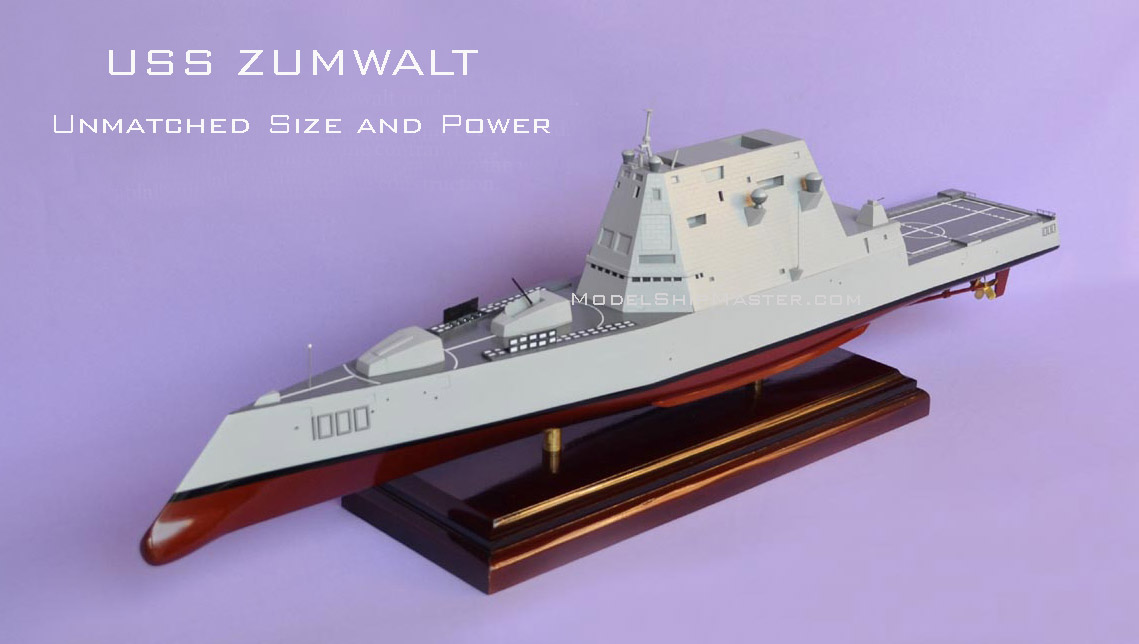
USS Zumwalt looked like
a small fishing boat during radar testing. How possible is it
to engineer a large destroyer that is significantly
less visible to enemy radar? Taking a look at her
external shape.
First and foremost, there are
fewer edges, a conspicuous absence of protruding
structures or varied contours and a flat side,
seamlessly attached to the upper deck of the ship,
on a straight, yet slightly angled flat linear
surface. Instead of multiple sharp, intertwined
steel panels and structures, supporting an
outward-facing radar system, the Zumwalt’s
front exterior shows only a few rounded edges to
achieve its requisite shape. Her much-discussed,
wave-cutting Tumblehome hull is more narrowly built
than existing destroyers, making it less detectable
to enemy sonar.
Most
current destroyers have multiple deck-mounted
sensors, weapons systems and angular staircases
visibly positioned on the deck of the ship; none of
this can be seen on the Zumwalt. Some of Zumwalt’s weapons, for instance, are housed in what
appear to be rounded, cone-like structures. Simply
put, the fewer edges or identifiable shapes you
have, the lower the possibility that electromagnetic
signals will effectively deliver an accurate picture
of the object.
In addition, the Zumwalt’s electric-drive propulsion system
is much quieter -- giving the ship
a smaller signature for overhead enemy sensors and
even submarines.
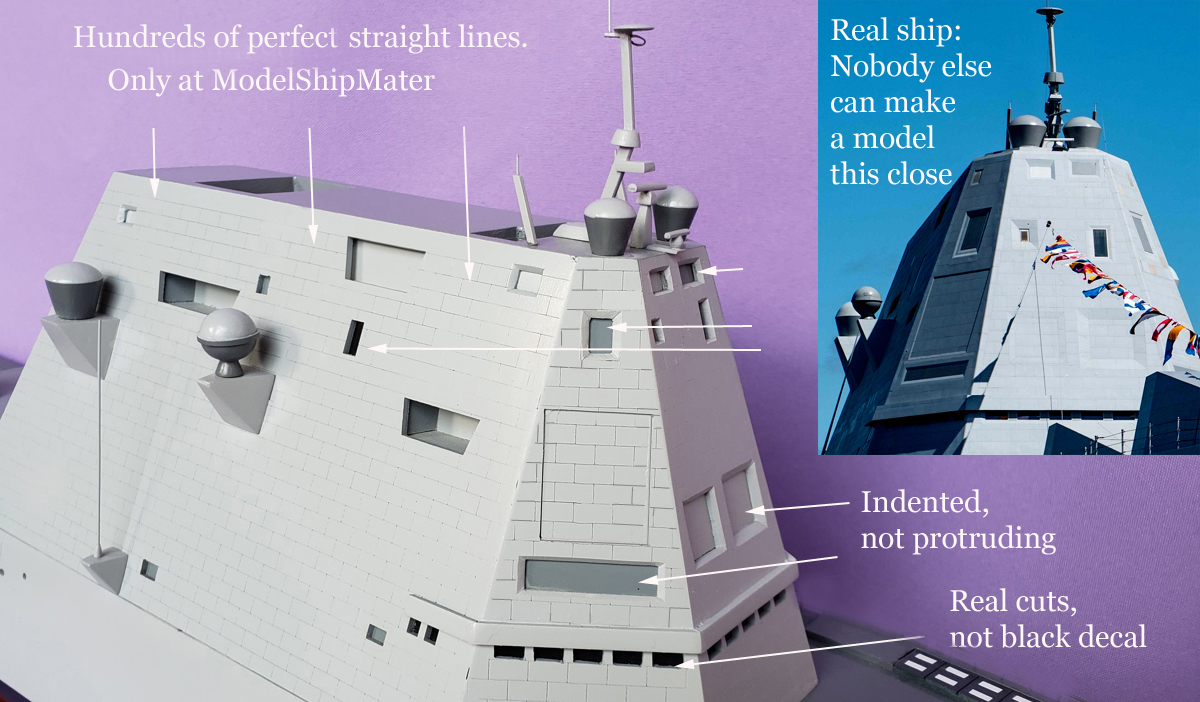
The innovative Integrated Power System (IPS) is
another characteristic that sets Zumwalt apart from
its predecessor. Unlike conventional destroyers
relying solely on gas turbines, the Zumwalt's IPS
combines advanced electric propulsion with gas
turbine engines, delivering unparalleled efficiency
and adaptability. The IPS incorporates
state-of-the-art Rolls Royce-designed generators,
integrated into the system by General Electric.
While the exact maximum power output remains
undisclosed to the public, it is widely known to far
surpass that of the Arleigh Burke class destroyers.
Her design with excess requirements allows the Navy
to experiment with nearly any new system, paving the
way for potential testing of advanced energy-based
weaponry, such as railguns, sonic, and lasers.

Destroyers' bridge,
which typically requires a crew of about five to 10
sailors on the Arleigh Burke-class, can be
effectively managed by a single sailor if necessary
on the Zumwalt. Multiple systems are centralized and
controlled through panels on the bridge. The ship is
designed to allow a single sailor to steer and take
command in emergencies.
The Zumwalt is
designed as a flexible ship, capable of carrying out
a wide variety of missions. Unlike previous destroyer
classes, designed primarily for deep-water combat,
the Zumwalt class was primarily designed to support
ground forces in land attacks. They also perform the
usual destroyer missions of anti-air, anti-surface,
and antisubmarine warfare.
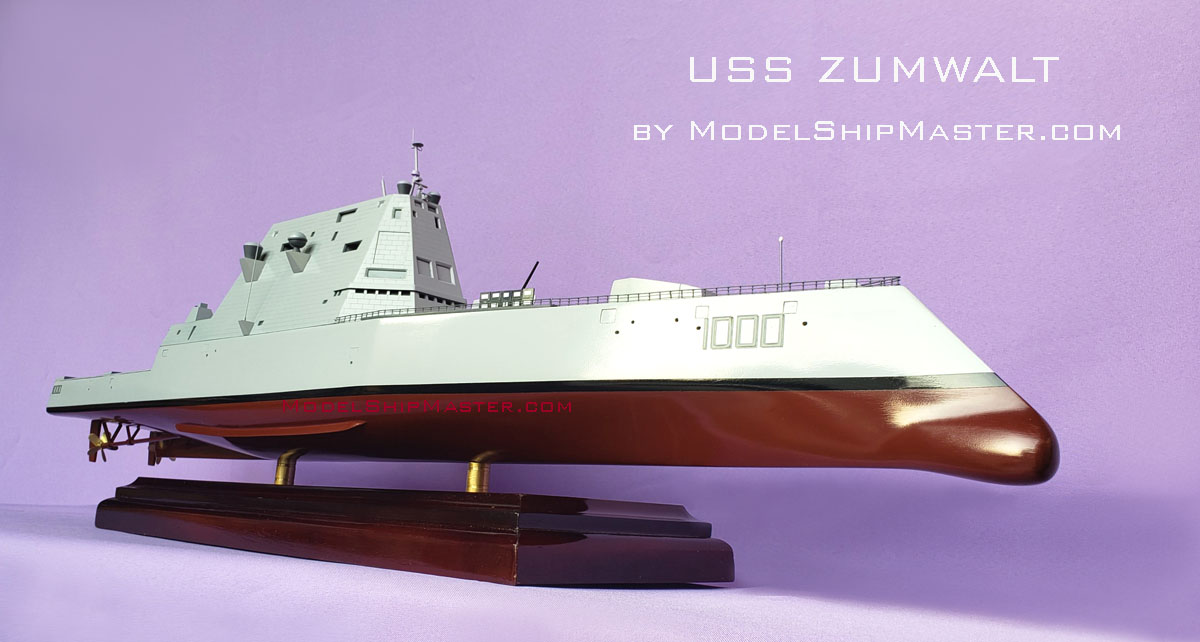
The USS Zumwalt is named after Admiral Elmo Russell
Zumwalt Jr. He has the distinction of being the
youngest admiral ever promoted in the U.S. Navy at
the age of 44 and later became the youngest
four-star admiral in naval history. Adm. Zumwalt
served in various conflicts. During World War II, he
was aboard the USS Phelps in the Battle of Leyte
Gulf, where he received the Bronze Star in
recognition of his valor. Subsequently, he earned
his first command, leading the USS Tills, which was
later called up during the Korean War. Admiral
Zumwalt's exceptional actions with the USS Wisconsin
battle group through treacherous waters laden with
mines earned him a combat ribbon. Upon his promotion
to admiral, he took command of multiple fleets,
ultimately being appointed as Chief of Naval
Operations by President Richard Nixon. In this
influential role, he introduced numerous innovative
programs and changes. He notably initiated 121
directives known as Z-Grams, which aimed to ease
racial and sexist tensions within the Navy while
ensuring the retention of high-quality sailors.
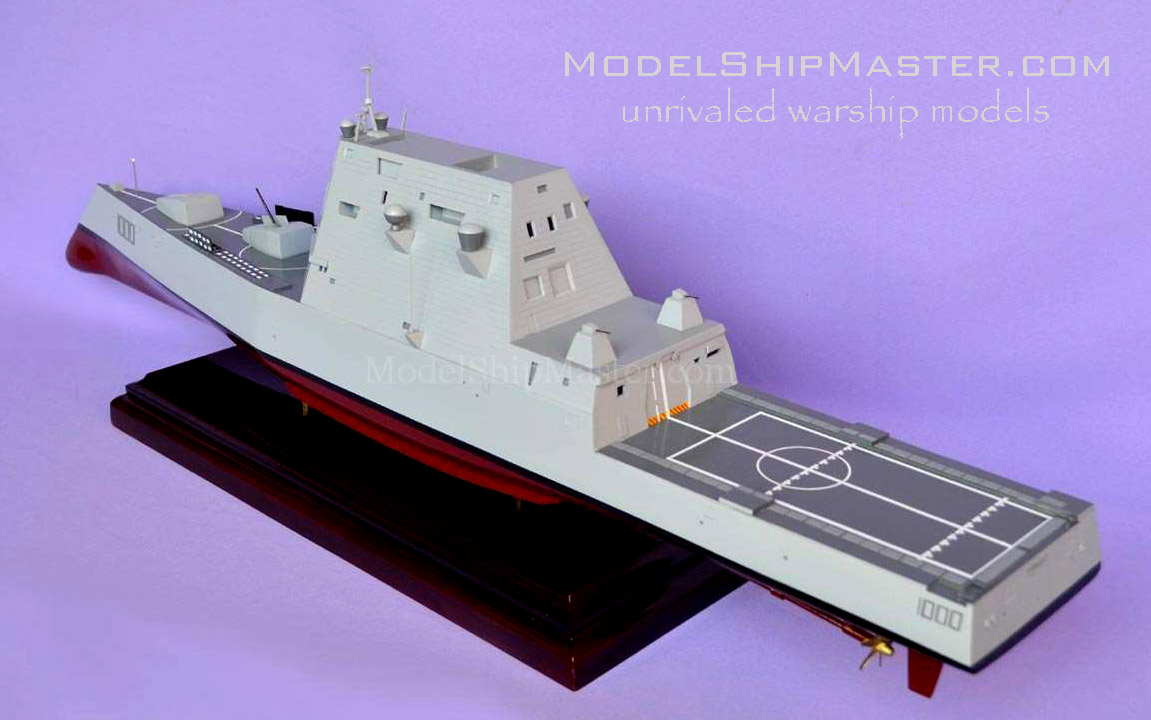
This primarily wood
1/200 scale model of the USS Zumwalt is 37" long x 13" tall x 5" wide
(7" with base)
$2,990
 shipping and insurance
in the US included. Other countries: $300 flat rate.
This Bunker Hill model is in
stock and can be shipped within 5 business days.
shipping and insurance
in the US included. Other countries: $300 flat rate.
This Bunker Hill model is in
stock and can be shipped within 5 business days.
20.5" long (1/350
scale)
$1,950
shipping and insurance
in the US included. Other countries: $200 flat rate.
By commissions only.
We require only a small deposit to start the process. The
remaining balance won't be due until the model is
completed, in
several months.
74" long (1/100
scale)
$11,950
shipping and insurance
in the US included. Other countries: $800 flat rate.
By commissions only.
We require only a small deposit to start the process. The
remaining balance won't be due until the model is
completed, in
several months.
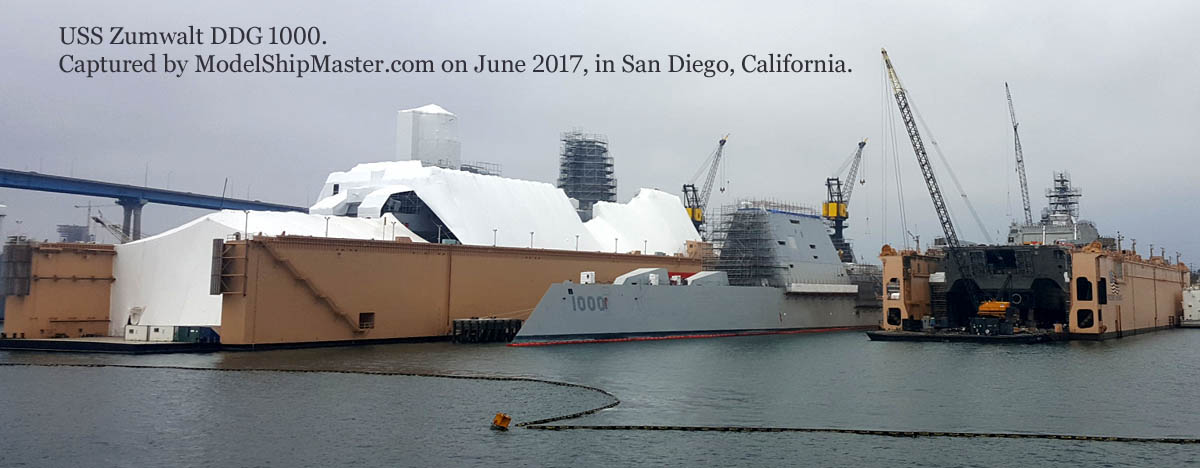
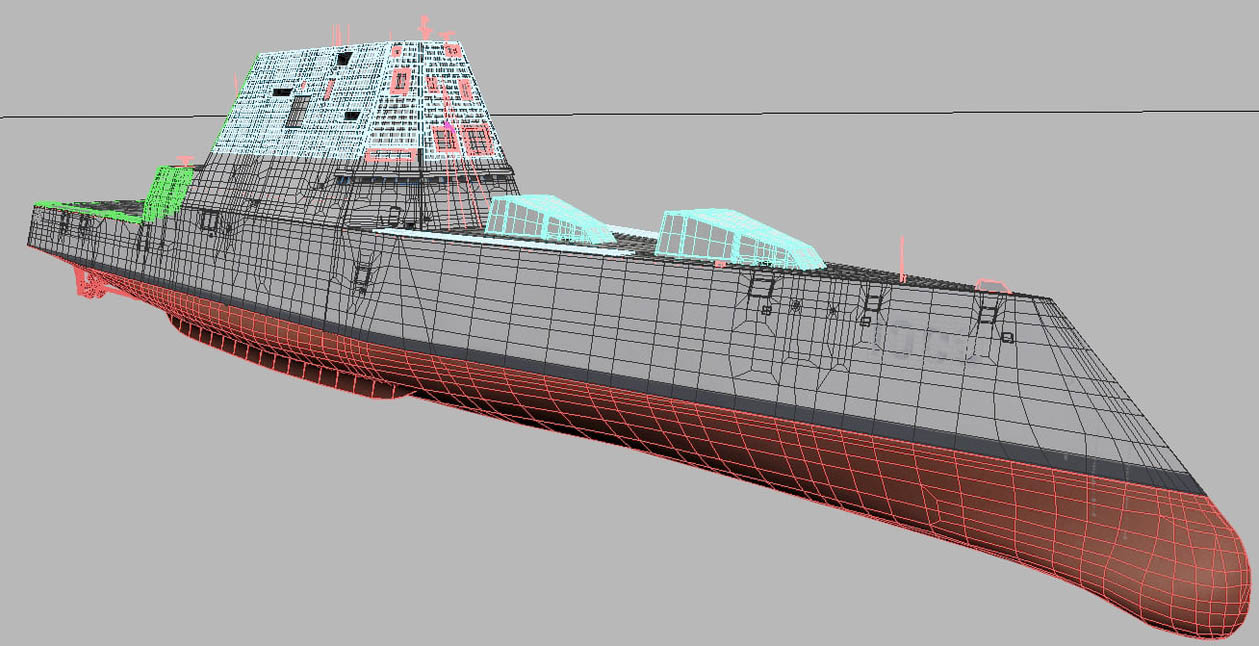
|